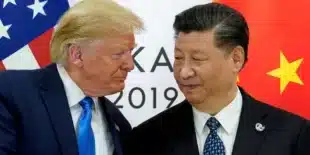Apple has significantly deepened its reliance on India, transforming the country into a key operational hub not just for manufacturing but for safeguarding access to the U.S. market amid rising geopolitical friction. Recent data shows a sharp increase in iPhone shipments from India to the United States, highlighting a major shift in the tech giant’s global logistics and trade priorities.
Between March and May 2025, nearly all iPhones exported by Foxconn from India were destined for the U.S. market. According to customs data, 97 percent of outbound shipments during that period headed to American shores, up from a previous average of 50 percent earlier in the year. This move is part of a broader strategy by Apple to reduce exposure to rising tariffs and trade uncertainty involving Chinese imports.
Export Surge Signals New Supply Chain Focus
In the three-month span, Foxconn’s India-based iPhone exports totaled approximately $3.2 billion. Nearly $1 billion worth of devices were shipped in May alone, making it the second-largest monthly shipment from India after the March peak of $1.3 billion. The sharp uptick underscores Apple’s evolving strategy, in which India is no longer a secondary manufacturing node but a central player in its efforts to maintain product flow to the U.S.
This shift is particularly significant in light of recent policy developments in Washington. U.S. President Donald Trump announced a 55 percent tariff on goods imported from China, a dramatic escalation in the ongoing trade dispute. In contrast, products shipped from India are subject to a far lower base duty of 10 percent. Although a proposed 26 percent reciprocal tariff on Indian goods remains under discussion, it has been temporarily suspended by the U.S. administration.
With more than 60 million iPhones sold in the U.S. each year, Apple’s dependence on Chinese manufacturing had left it vulnerable to substantial price increases. The redirection of its export pipeline through India is aimed at shielding American consumers—and Apple’s margins—from the full impact of these tariffs.
Logistics Overhaul to Accelerate Delivery
Apple’s logistical adjustments go beyond manufacturing locations. To ensure uninterrupted and timely deliveries to the U.S., the company began chartering dedicated cargo aircraft from India to fly shipments of high-demand models, including the iPhone 13, 14, 16, and 16e. To further streamline its export operations, Apple has worked closely with Indian customs authorities at Chennai airport to reduce clearance times from around 30 hours to just six, enabling faster processing of high-value electronics.
These enhancements in supply chain efficiency reflect Apple’s determination to make India a viable, scalable production center capable of meeting demand in its largest market.
India’s Manufacturing Ambitions and Persistent Challenges
Industry analysts forecast a continued rise in India’s contribution to Apple’s global output. Projections suggest that iPhones assembled in India could comprise up to 30 percent of Apple’s total global shipments by the end of 2025, up from 18 percent the previous year. This trend marks a notable acceleration in Apple’s diversification away from China.
However, India’s emergence as a manufacturing powerhouse is not without limitations. Domestic production remains constrained by high import taxes on critical components such as chips and displays. These added costs reduce India’s competitiveness compared to China’s well-integrated electronics ecosystem, despite favorable trade terms with the U.S.
Still, India’s rising prominence in Apple’s global strategy has elevated its role in the broader smartphone supply chain.
Tensions with Washington Over Offshore Expansion
Apple’s increased footprint in India has drawn political attention in the U.S. In May, President Trump reportedly criticized Apple CEO Tim Cook over the company’s growing investment in Indian manufacturing. According to sources cited by Reuters, Trump expressed a preference for seeing Apple expand production within the United States rather than abroad.
Despite the criticism, Apple has continued to scale up operations in India, driven by the need to balance cost efficiency, production continuity, and trade compliance. With U.S.-China relations under strain and tariffs mounting, the company appears committed to reducing dependency on Chinese factories.
Apple’s shift toward India, once considered part of a long-term diversification plan, has become central to its short-term survival strategy in a volatile global trade environment. Whether tensions with Washington ease or intensify, India has become indispensable to Apple’s global supply chain, particularly for serving the critical U.S. market.


